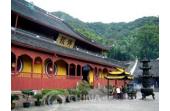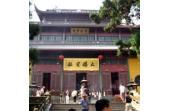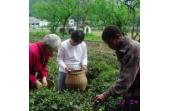Lingyin Temple
- Things to do
-
- Photo(11)
- Tips&article(16)
- Make it Happen
- Map
-
loading...
- Other Tours
-
- Xitang Town
- Xihu Tiandi
- Qinghefang Pedestrian Street
- Six Harmonies Pagoda
- Nanxi River
- Hangzhou
- Lingyin Temple
- Grand Canal
- Meijiawu Tea Plantation
- Mountain Putuo
- Thousand Islets Lake
- Peak Flown From Afar
- Hangzhou Chinese Medicine Museum Of Hu
- West Lake
- Song Dynasty Town
- Hangzhou National Tea Museum
- Hang Zhou National Silk Museum
- Zhexi Grand Canyon
Top 5 Lists
-
4.
West Lake
Lingyin Temple, or Temple of the Soul's Retreat, got it name from its tranquil surroundings. Sheltered by forested hills on three sides, the temple is a quiet and sheltered sanctuary (when it is not thronged by visitors). Lingyin (Hidden Spirit) Temple is one of the largest and most visited Buddhist temples in China and holds the largest statue of the Buddha Sakyamuni in the lotus position.
It was built in 328 AD by the Indian Monk Huili. It prospered and flourished during the Five Dynasties Period (907-960) when there were 9 buildings, 18 towers, 72 halls with 1,300 rooms and more than 3,000 monks. Over history, the temple has been damaged and undergone renovation several times. It has recently been rebuilt in its original style.
The temple consists of the Hall of the Heavenly King, Hall of the Great Hero, Hall of the Buddha of Medicine, East and West Winding Corridors and several other buildings. In the center of the Hall of the Heavenly King, sits a statue of Maitreya, the fat, bare-bellied Buddha with a smiling face – the laughing Buddha.
In the hall of the Great Hero, the main hall in the temple, the central spot contains a magnificent statue of Sakyamuni, founder of Buddhism. The 19-meter tall statue is seated on a 10.5-meter-high lotus flower amidst great red pillars and murals. Behind Sakyamuni is a colorful sculpture of 150 Buddhas.
One other recently added hall holds the 500 Arhats: bronze statues resembling 500 of the earliest high-ranking Buddhist disciples in China.
As an important Buddhist temple in the region, Lingyin Temple also houses a large collection of Buddhist treasures and relics which are significant in the development of Buddhism in the region. The temple is now very popular among tourists and pilgrims, seeing thousands of worshipers per day during peak season.
You may take bus route 7 and 807 and tourist line 1, 2 and 4, and get off at the Yinlin stop.How to Get to there?
Tips & articles
|
|
|
forum discussion
|
|
|












